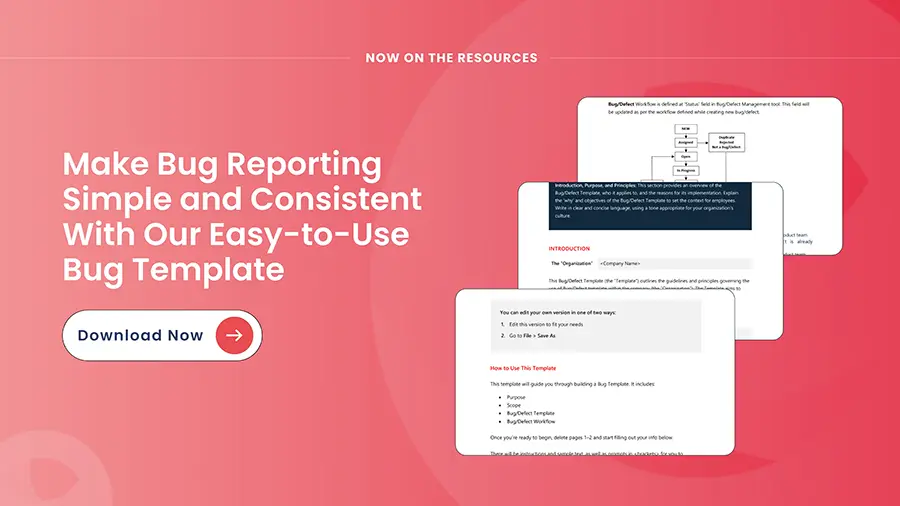Observability in test automation is pivotal. It allows engineering and business teams to improve test automation processes continuously. At Enhops, we work with our clients to establish test automation strategies and programs that are always agile. For this, we integrate their CI-CD-CT pipelines with right set of tools and help in scaling them across the organization.
As a result, we have established more than 15+ high-performing TCoEs that are now helping our clients in releasing high-quality digital applications. Building observability is the key part of this process. Read on to know what does it mean to bring in observability in test automation and how to implement the same.
If this is something that interests you,
get in touch with us – marketing@enhops.com.
Observability is extremely important to the success of software testing and quality assurance initiatives. However, defining observability in test automation is tricky. Some people confuse it with reporting, tracking, defect logging, and monitoring. While others think that it’s all about test analysis, metrics, and measurements. I would say these things define observability in bits and pieces.
Observability, when implemented correctly, gives incredible insights into deep internal parts of test automation and related applications It allows to uncover complex and improvement-focused questions, such as:
- Why are your tests failing?
- Which tests are doing well? Which tests are doing poor?
- What should be next areas of improvement?
- Does your application performance can still be improved?
- What are emerging security threats?
In this article, you will learn what observability in test automation is, why it’s important and what kinds of problems it solves. You’ll also learn about best practices for observability in test automation and how to implement is so that you can start improving your test automation practice today.
What is Observability in Test Automation?
Test Observability is the ability to collect, measure, and analyze data from automated tests to gain insights into the health and performance of a system. This data can be used to identify and fix bugs, optimize test suites, and improve overall software quality. The three major components of observability are traces, logs, and metrics.
| Feature | Observability | Monitoring | Alerting |
|---|---|---|---|
| Goal | Understand the state of a system and identify the root cause of problems | Identify potential problems and notify users | Notify users of potential problems |
| Data | Metrics, logs, traces, and other telemetry data | Metrics, logs, and traces | Metrics, logs, and traces |
| Scope | Entire System | Specific Components and Services | Specific Components and Services |
| Complexity | Very complex in terms of application and data dependencies | Less complex than observability | Involves complexity in terms of alerting user flows etc |
How is it important for testers?
Testing is not what it used to be a decade or two ago. Testing is a complex system now consisting of multiple applications, systems, users, and they aren’t getting any simpler. With advent of new technologies like blockchain, internet of things, mobile applications, and more, testers are always on the edge.
While for developers, it is simply pushing a new code or developing a new feature; testers need to test the whole system so that new features don’t break the existing ones. That’s where observability comes into picture.
Here are some of the benefits of observability in test automation:
- Defect risk reduction: Test automation thrives on its ability to identify defects early in the development process and observability can help in pin-pointing these defects along with accurate reasons. One of the examples of reducing risk defects are ability to identify flaky tests before their execution. The reason for flaky tests sometimes passing and sometimes failing are very difficult to identify and troubleshoot, ultimately leading to end users issues. Observability can limit the flaky tests incidents by identifying the root cause of the problem and troubleshoot without issues being pushed into production.
- Better test automation processes: Observability shares great insights on identifying test automation processes and areas of improvement. This helps in reducing time and effort to manage test automation suites. Observability implemented for few applications can also uncover insights about what tests to be automated first and what goes after. This increases chances of test automation success and implements continuous improvement organically in the process.
- Increased confidence in test results: Observability matures the whole test automation process by continuously tracking and monitoring the performance of tests over time. It helps in identifying trends and patterns that may indicate a problem in future. With observability in place, a team more confidence in the automated test results and this can help in improving the quality, reliability, and efficiency of the testing process.
Overall, observability is a powerful tool that can be used to improve the quality, reliability, and efficiency of test automation. By collecting, analysing, and visualizing data from automated tests, observability can help to identify defects early, improve test coverage, optimize test automation processes, and increase confidence in test results.
How to implement Observability in Test Automation
Observability in test automation is useful for every test automation team – whether they are well-oiled and running efficiently or just beginning their automation journey, the need for observability in test automation is always constant. And with applications getting more complex and releases getting faster, quality engineering teams need to consider and implement observability model in their software testing lifecycle.
Here are the steps on how to implement observability in test automation:
- Decide on your metrics and KPIs: To implement observability, it is very important to define metrics and KPIs that you want to collect, observe, and improve. The metrics and KPIs depend on specific business and team needs. Some of the common metrics include test execution time, test coverage metrics, number of tests passed/failed, script effectiveness, automation test coverage, and more.
- Choose the right tools: While observability and continuous improvement is more about mindset, we can’t deny the effectiveness of right tools integrated into the system. These tools help in collecting and analysing the observability data. Some popular options are Prometheus, Grafana, and New Relic.Right tools and their implementation is vital to the overall health of your applications and apps. With right logging and monitoring tools, team get real-time of view of how applications and systems are used and maintained. These logs and metrics also give deeper insights and opportunities about leveraging them to improve the code quality, increased efficiency, and mitigating risks for a superior customer experience.
- Configuring the right tools: After tools selection, it is important to configure them in a fashion so that they collect the right data for both technical and business stakeholders. This involves integrating these tools in CI-CD pipelines, setting up metrics alerts, creating dashboards, and defining rules for data filtering.
- Modify your code: Once the configuration is done, test automation team needs to modify or instrument the code to emit metrics and logs. There are variety of ways to use a logging framework or adding custom code to your tests.
- Collect and analyze data: Once the code is modified and tools are configured, data starts accumulating from test automation suite. This data can be used to identify and patterns to troubleshoot problems and improve overall performance of test automation suite. Further, teams that are implementing AI-ML in their test automation suite can use this data to prepare self-running scripts, AI-ML based test automation scripts, test data management, and other AI-ML use cases.
- Continuous Improvement: Observability derives deep buried insights into the logs and metrics and helps team in identifying and fixing problems before they reach end-users or causes major issues.
Observability approach needs long term commitment to succeed
With test automation, teams are effectively reducing the time to test their software and applications. Doing this is not an easy job and on top of it, software releases are getting faster. This means teams must stay two steps ahead and keep observing data and metrics from their test automation suite. This is where observability comes into picture.
Every effective observability strategy relies on three main pillars: traces, logs, and metrics. But in order to succeed with this, it is essential to establish the effective communication between IT and business stakeholders, discuss and implement observability tools, and ensure that right questions are being asked without keeping team’s performance at a stake.




